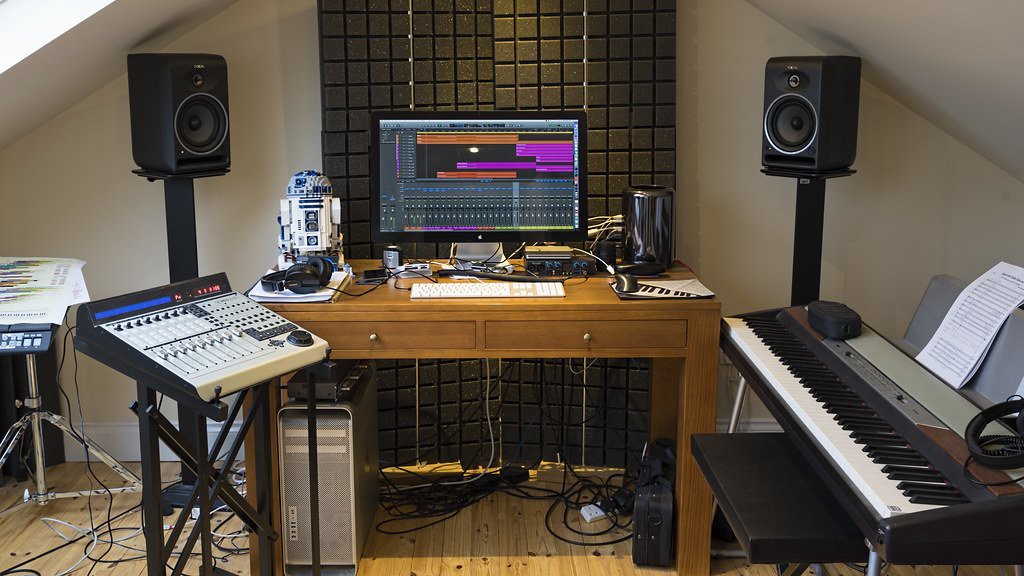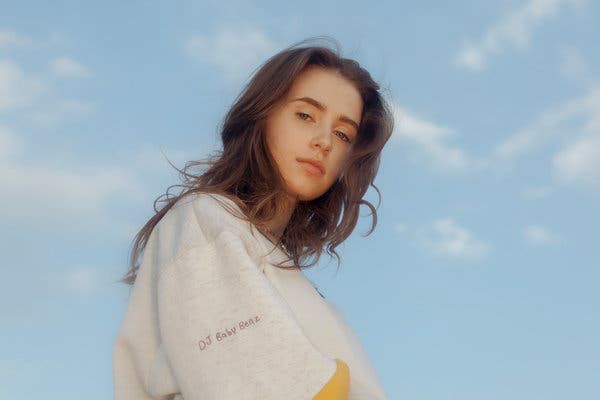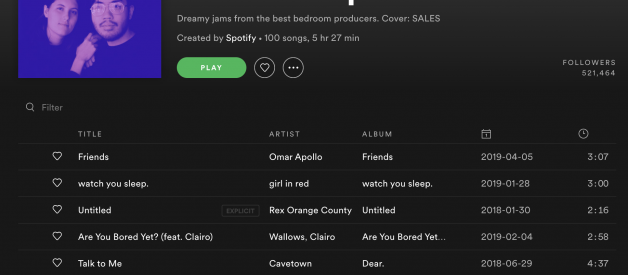As 2019 comes to a close and we move into a new decade, we reflect on the music genre that took over the music scene: bedroom pop.

One of the trademarks of this past decade was the inception and popularization of DIY artists and home studios. A DIY artist is an independent artist who writes, records and produces their own songs, usually in their own homes. With the advancement of DAW (Digital Audio Workstations) such as Logic Pro X by Apple, Ableton Live and FL Studios, more and more artists are leaning towards making their own music. Gone are the days of paying producers, engineers and labels thousands and thousands of dollars to release a song. Now, everything an artist needs is on the internet. You can write a song, record it in your bedroom and release it with an online label all in the same week.
This new way of making music gave birth to a whole new genre of music called Bedroom Pop. Bedroom pop music in itself isn?t completely new, and for most of the early 2000s, it was known as lo-fi music. Characterized by slightly out of tune chords, the scratching of a vinyl record in the background and anime GIFs, lo-fi was the creation of bedroom producers. These imperfections became aesthetics and listeners like the relaxing and chill quality of lo-fi. It?s also a genre that some have deemed has ?ruined music?, morphing more into background music rather than entertainment that is supposed to be studied and reflected upon.

But bedroom pop took it one step further. Bedroom pop was the product of young, budget singer-songwriter-producers who wanted to share their music with the world. Streaming platforms such as YouTube, Spotify and Soundcloud allowed these undiscovered, and often young, talents create and share their own music. One example of a bedroom pop sensation is Conan Gray. His Spotify bio literally reads:
?Armed with nothing more than Garageband and a cheap microphone taped to a lamp, Conan released his song ?Idle Town? on his YouTube channel as an ode to his hometown of Georgetown, TX. The song went viral??
Gray?s music is undeniably nostalgic and has found refuge in the playlist of Gen Z children. But I think his story is what makes his music more interesting. A UCLA-bound film student, his music, like many artists nowadays, was born on the internet. His songs have a way of describing the highs and realities of teen life. In his most recent release, ?The Story?, he tells the mellow story of his childhood friends. Compared to his previous upbeat, 80s-inspired hits ?Maniac? and ?Crush Culture?, ?The Story? is quite stripped and generic.
 American singer-songwriter, Clairo
American singer-songwriter, Clairo
Another artist born from her viral YouTube original, ?Pretty Girl? is Clairo. She once said in an interview with Fader magazine that the ?do-it-yourself attitude is what [she?s] all about? despite rumours of her being an industry plant. Her original recording of ?Pretty Girl? has almost 95 million streams on Spotify, with its poorly recorded vocals, cheesy drum machine beat and all. ?Flaming Hot Cheetos? was another one of these songs.
Clairo?s quick success begs the question, ?Can anyone become a famous pop star?? Her music is great, but so are the infinite number of other musicians on Soundcloud or Spotify. Perhaps it all boils down to luck and some clever lyrics. So then, what makes bedroom pop so appealing? For some, particularly professional songwriters and producers, it seems like an excuse for amateur producers to release music at a professional standard.
 English singer-songwriter and producer, Cavetown
English singer-songwriter and producer, Cavetown
One bedroom pop artist who actually does credit others for his success is the English singer-songwriter, Cavetown. He?s the son of a professional flautist and Cambridge University?s director of music. Often accompanying his raspy, timid ?bedroom pop? vocals on ukulele or guitar, his music again embodies the 80s and 90s drum machine sound and gravitates towards nostalgic melodies. Cavetown also produced music for other bedroom pop artist, mxmtoon. In her lead single, ?prom dress?, she jams on the ukulele as she reminisces on her last year of high school.
The rise of bedroom pop seems optimistic for many young aspiring musicians to put their music out into the world and has created a safe haven for people of all genders, races, and backgrounds. But at the same time, it gnaws at the gates of professional musicians, producers and songwriters who are already losing much revenue as a result of music streaming services. Studios and labels no longer have as much control of the music industry and music streaming services have become large haystacks of music. As a result of the overwhelming amount of music available to listeners, the lines between pop and indie genres are blurring more and more. Bedroom pop is just another concoction of the two genres merging.


